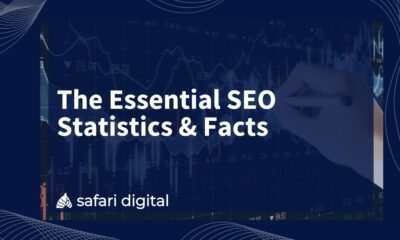Business
7 Factors You Need to Consider When Automating User Provisioning
Published
10 months agoon
By
Abdus Subhan
User provisioning can be a major pain point for IT teams. The manual process of creating, modifying, and deleting user accounts is time-consuming, prone to errors, and makes compliance audits difficult. That’s why more and more organizations are turning to automation.
Automating user provisioning comes with many benefits, including improved efficiency, better security, and reduced costs. But before you dive in, you need to carefully evaluate some key factors to ensure a smooth and successful implementation. In this post, we’ll explore 7 critical considerations when automating user provisioning.
1. Integration Requirements
The first step is determining what systems you need to integrate for automated provisioning. Common targets include:
- Active Directory for managing Windows user accounts
- Cloud apps like Office 365, Salesforce, Slack, etc.
- VPNs, firewalls, and other security infrastructure
- Physical access control systems
- Custom in-house applications
HR System
Your HR system like Workday, SAP SuccessFactors, or BambooHR is the authoritative source for key user attributes like:
- Name
- Job title
- Department
- Location
- Manager
Integrating your HR system allows creating or updating user accounts as these details change.
Active Directory
Active Directory is the bedrock for managing Windows environments. Connecting AD allows automating:
- User account creation, updates, and deletion.
- Group membership management.
- Password policies.
- Permission and access management across file shares, applications, etc.
Office 365
For organizations using Office 365, automating provisioning allows you to:
- Create and manage Office 365 accounts as users join or leave.
- Assign Office 365 licenses based on roles.
- Manage distribution groups.
- Control OneDrive access.
- Admin SharePoint sites.
Cloud Apps
Beyond Office 365, connecting cloud apps like Salesforce, Slack, Box, and more means you can:
- Automate user setup and removal as people join or leave projects.
- Assign app permissions and access levels based on user attributes.
- Manage public groups or mailing lists.
VPNs and Firewalls
Integrating VPN and firewall solutions allows instant provisioning or revoking access to secure corporate resources as users come and go.
Physical Security Systems
If you use systems like card access controls or biometric scanners, automated provisioning can instantly issue, update, or disable physical credentials when triggered by HR or IT platforms.
Custom Applications
Don’t forget proprietary or in-house developed apps and systems. Automated provisioning can help streamline managing users and permissions in these critical tools.
The more mission-critical systems you can integrate, the more you can leverage automation to improve efficiency, security, and accuracy across user lifecycles.
That’s why more and more organizations are turning to automated user provisioning solutions.
2. Role-Based Access Controls
The role-based access controls help the automation process. With automation, you can enforce permissions and access levels based on user roles and attributes. For example, contractors get one set of permissions, while executives get broader access.
First, analyze how you segment users today. Document existing roles, standard permissions for each, and any exceptions. This becomes the blueprint for configuring role-based provisioning.
3. Workflow Configurations
The workflow configuration helps to set up. Automated provisioning isn’t just about new user setup. It can handle offboarding, transfers, role changes, and other scenarios.
Determine what approval chains or other workflows you want to be built into the system. For example, require manager sign-off before a user is onboarded or offboarded.
The right workflows prevent errors while adding oversight and compliance.
4. Data Migration
The data migration is all about transferring data, to leverage automation, you need to migrate existing account data into the new provisioning system. This includes details like:
- User attributes (name, department, location, etc.)
- Group/role memberships
- Application access and permissions
Assess your starting data quality. Are there duplicate accounts or orphaned records to clean up? Develop a plan to migrate data seamlessly.
5. Ongoing User Data Synchronization
Automated provisioning relies on timely user data. If core attributes like name or role aren’t updated in the system, provisioning errors occur.
Determine how you’ll synchronize profile changes from authoritative sources like HR systems into the provisioning system. Real-time sync is ideal to prevent errors.
6. Compliance-Related Controls
Automated provisioning provides powerful controls that boost compliance such as:
- Access certification to attest to the correctness of permissions.
- Separation of duties to restrict sensitive account combinations.
- Access request workflows with approvals.
- Audit trails tracking all changes.
Determine which controls apply to your compliance needs, and make sure you implement them upfront.
7. Ongoing Governance
The work doesn’t stop once provisioning is automated. You need continued governance including:
- Business process and policy review to optimize configurations.
- Tuning workflows and access models as needs change.
- Regular audits to uncover any errors.
- Troubleshooting and enhancements during application upgrades.
Consider if you have the bandwidth to manage this lifecycle. If not, outsourcing oversight to a managed service provider is an option.
Key Takeaway
As mentioned above, automating provisioning takes thoughtful planning but pays dividends in improved security, efficiency, and reduced workload.
Assess integration needs, develop solid role definitions, configure effective workflows, clean up data, implement compliance controls, and plan for ongoing management. Follow these 7 best practices and you’ll be well on your way to successful automation.
Automating user provisioning takes thoughtful planning, but the efficiency, security, and compliance gains are immense. Assess your needs, find the right solution, and develop a phased rollout plan to achieve provisioning success. Reach out if you need any help getting started!
Frequently Asked Questions
- How does automated provisioning improve security?
Automation enforces consistent, role-based access policies, eliminating errors that lead to permission creep or orphaned accounts. It also provides audit trails and supports access reviews to validate entitlements.
- What systems can automated provisioning integrate with?
Leading solutions connect to HR systems, Active Directory, Office 365, cloud apps like Salesforce, VPNs/firewalls, physical security systems, custom apps, and more.
- Does automated provisioning require coding?
Low-code or no-code solutions are ideal. This allows IT to set up and manage provisioning without dependency on developers or lengthy deployments.
- What ROI can automation provide?
Studies show automated provisioning provides 379% ROI over 3 years. Benefits include up to 92% time savings, lower compliance costs, fewer security incidents, and better user productivity.
Recent News


4 Amazing Trips for Your Family
Choosing somewhere for a family vacation that would pique the attention of adults and kids alike can be a fun...


Customising Your Makeup with Blendable Blush Options
In cosmetics, one’s face is a canvas for self-expression and creativity. Among the myriad of products available, blush is a...


The Benefits of Regular Home Maintenance
Regular home maintenance is essential for maintaining and even raising the value of your house. A proactive approach to repairs...


Understanding the Importance of SEO in Adelaide
In the digital marketplace, Adelaide businesses are in a continuous contest to gain the attention of their target audiences. With...


Breaking Down the Numbers: Understanding the Average Traveling Nurses Pay
The open road, adventure, and the chance to heal – travel nursing promises an undeniable allure. But amidst the excitement,...


Dealing with Oily Skin in Summer: Tips and Tricks
As the temperature rises, those with oily skin often face an additional challenge—maintaining a clear and balanced complexion. Excess oil...


Mountain Wedding Ideas for 2024
A mountain wedding is a stunning choice for couples who cherish nature and desire a distinctive wedding experience. Whether you...


3 Of The Best Ways To Keep Your Salon Clean
It is of the utmost importance to ensure that a salon is kept scrupulously clean, not just for the sake...


3 Reasons You Should Get Blood Tests Every Year
Regular blood tests are essential for preserving general health and identifying potential problems early on. Medical professionals can evaluate your...


How to Make Your Next Crafts Project Pop
Crafting is a creative outlet that allows individuals to express themselves through various mediums such as paper crafts, sewing, painting,...
